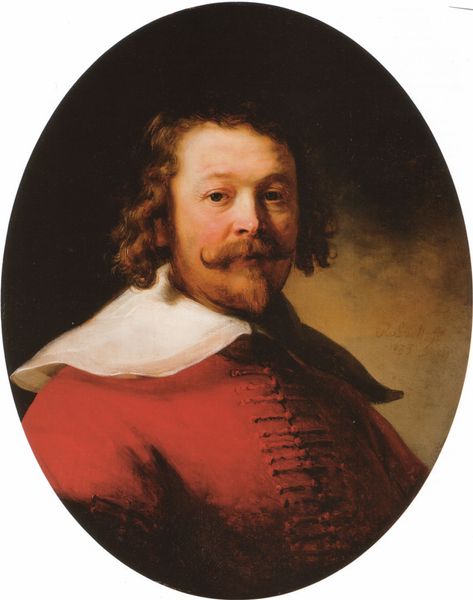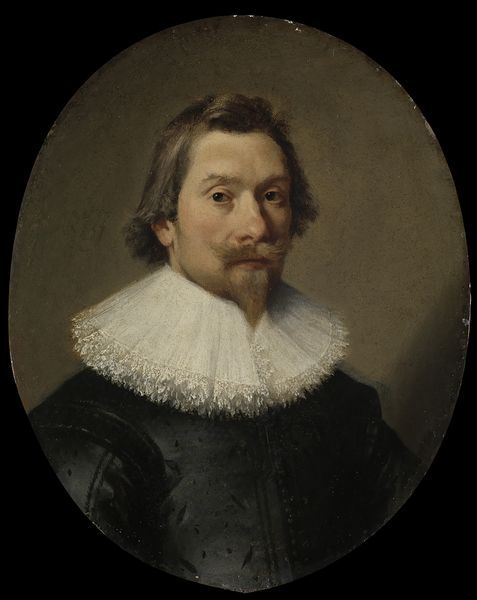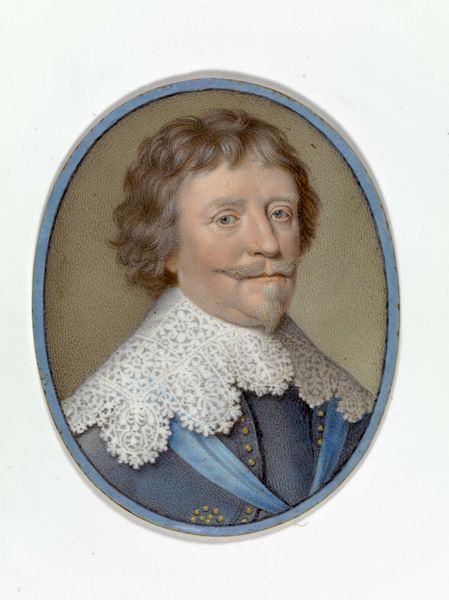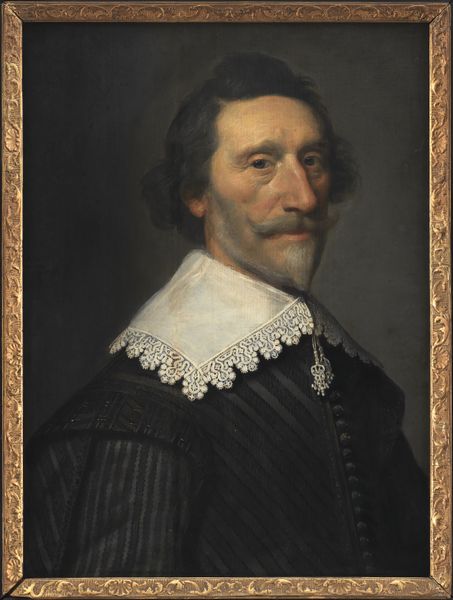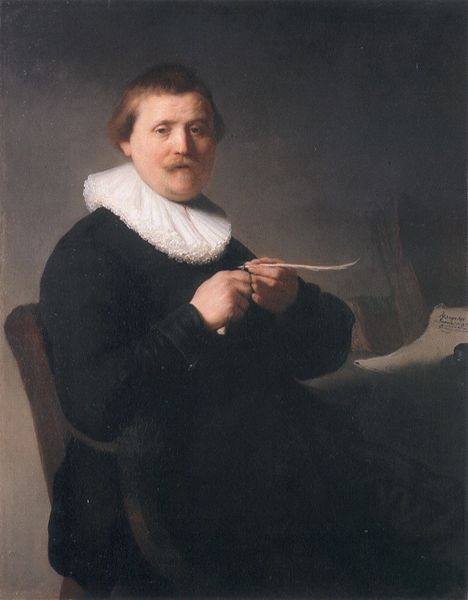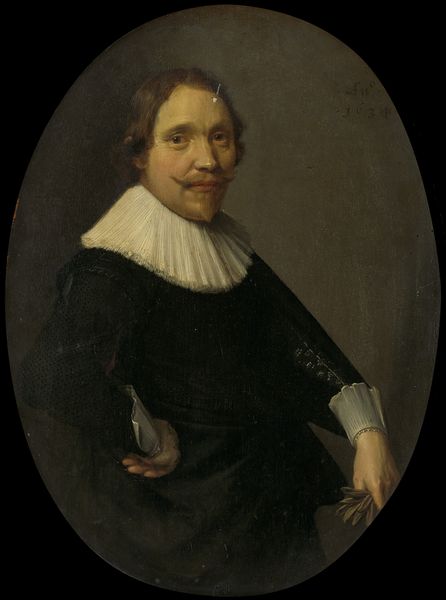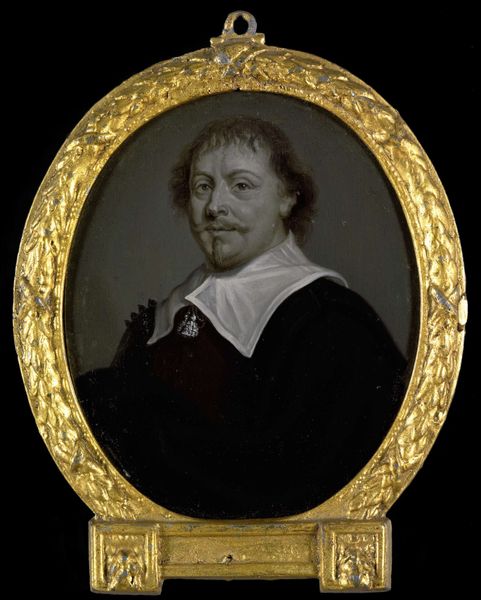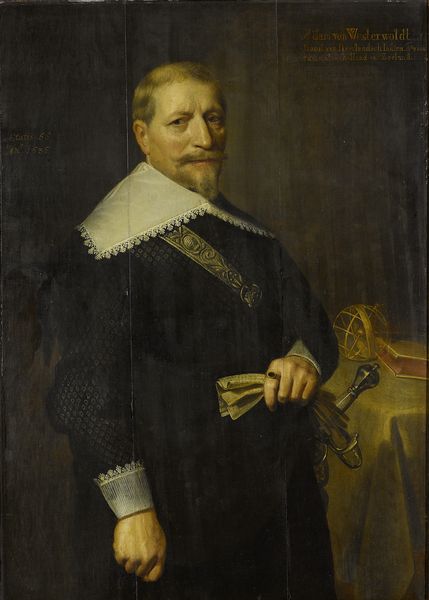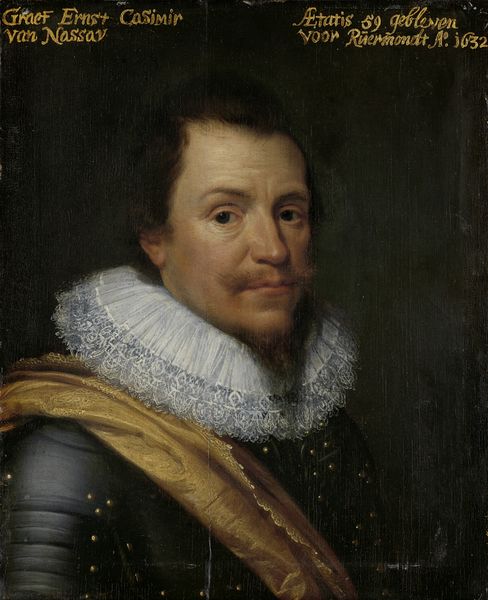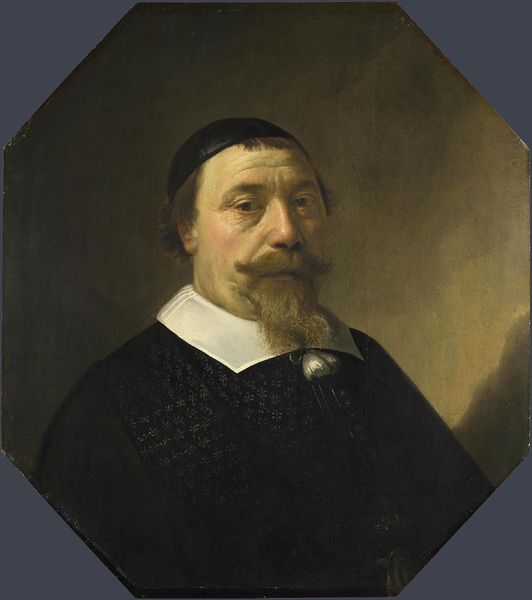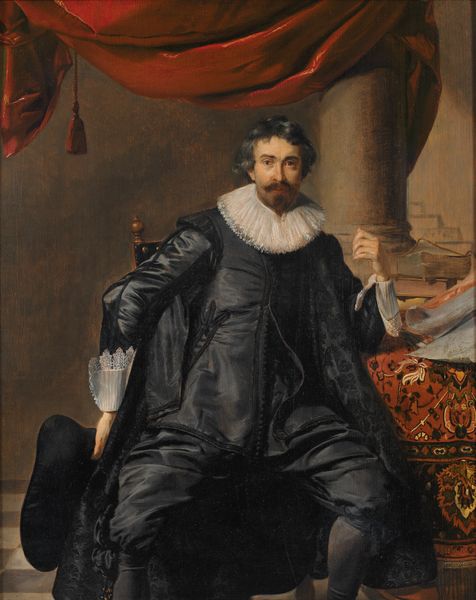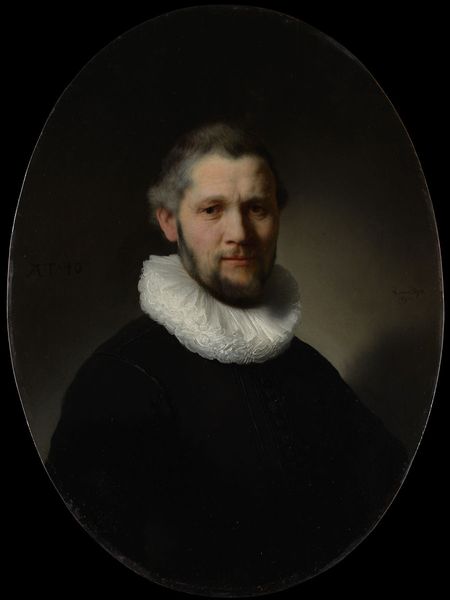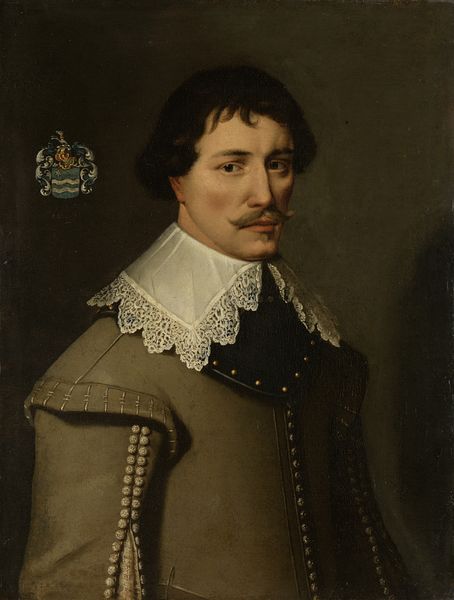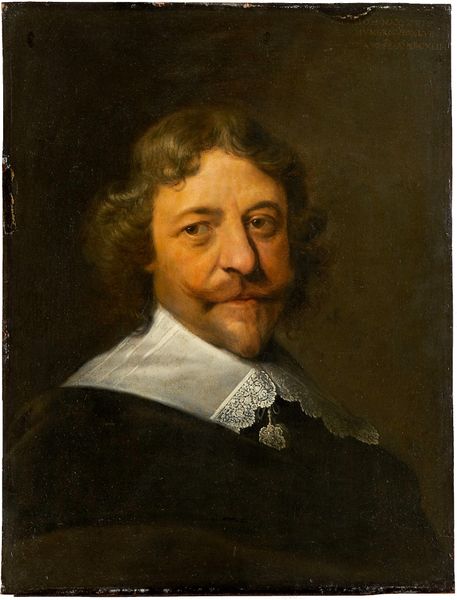
oil-paint
#
portrait
#
self-portrait
#
baroque
#
dutch-golden-age
#
oil-paint
#
intimism
#
chiaroscuro
Dimensions: 80 x 59 cm
Copyright: Public domain
Curator: Here we have Rembrandt van Rijn's "Portrait of Philips Lucasz," painted in 1635. It hangs in the National Gallery in London. Editor: Immediately, what strikes me is the lace, so delicate against the dark, almost swallowing shadows. It gives the sitter a kind of vulnerable grandeur. Curator: The choice of dark background really allows for a spotlight on the subject. This use of chiaroscuro was something of a Rembrandt signature, heavily influenced by the social norms around portraits. The Dutch Golden Age was known for its prosperous merchant class. A piece like this elevated those powerful men. Editor: And within that darkness, there's so much light concentrated on Lucasz's face. A direct gaze holds you, while the oval shape constrains and contains it. It suggests the intimate realm of the household more than the public world of commerce, even as it depicts this influential figure. I wonder, did his contemporaries appreciate this focus, this domestication of power? Curator: Portraiture was increasingly democratic at this time in the Netherlands. Instead of portraying noble figures, more of the upper middle class and their families were shown. Patrons of art held significant influence over both the market and how they wished to be depicted. This composition allowed Lucasz to present himself as respectable, and authoritative while avoiding being pompous. Editor: Looking closer at Lucasz himself, beyond the symbols of status like the gold chain and elaborate lace, there’s a sensitivity in his eyes. Rembrandt captured something profoundly human. That upward glance hints at contemplation, or perhaps concern. Curator: Absolutely. And consider the institution that displays this portrait today. A public national gallery frames our understanding. It becomes less a portrayal of one man’s status and more a study of a specific cultural and economic moment. Editor: So it does. Ultimately, whether consciously or not, Rembrandt allows us a glimpse beyond the public facade into something more lasting—the universal human condition. Curator: Indeed. Rembrandt uses art and society simultaneously to reveal aspects about us, then and now.
Comments
No comments
Be the first to comment and join the conversation on the ultimate creative platform.
